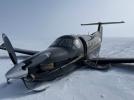Ryanair B738 near Zurich on Jul 12th 2013, climbed without clearance, high risk of midair collision
A Ryanair Boeing 737-800, registration EI-ENK performing flight FR-3595 from Pisa (Italy) to Luebeck (Germany), was enroute at FL360 southeast of Zurich (Switzerland) in contact with Switzerland's area control center M4. The crew requested to climb to FL380 however without mentioning their call sign "Ryanair 3595".
A TAP Air Portugal Airbus A319-100, registration CS-TTD performing flight TP-706 from Lisbon (Portugal) to Prague (Czech Republic), was enroute at FL370 southeast of Zurich in contact with area control center M4, both aircraft were on converging tracks but sufficiently separated vertically.
Another Ryanair flight, callsign Ryanair 6DW, reported on M4 frequency at FL360 and was instructed to climb to FL380. The crew of FR-3595 acknowledged the instruction with callsign "Ryanair 3595", which was not picked up by the controller. The crew of flight RYR6DW did not react/read back and did not climb.
A short time later the short term conflict alert activated on M4 radar identifying FR-3595 and TP-706 to be in conflict. The controller queried whether FR-3595 was still at FL360 and after the crew replied in the negative instructed FR-3595 to immediately descend to FL360 again. In the meantime TCAS resolution advisories were generated in both cockpits, both crews complied with the resolution advisories which resolved the conflict.
Both aircraft continued to destinations for safe landings.
Switzerland's SUST released their final report reporting the separation between the aircraft reduced to 0.8nm laterally and 650 feet vertically involving a high risk of collision and concluding the probable cause of the serious incident was:
The serious incident is attributable to the fact that the crew of a commercial aircraft initiated a climb without clearance, which lead to a dangerous convergence with another commercial aircraft.
The following factors were identified as the cause of the serious incident:
- The crew initiated the climb on the basis of a clearance which had been issued to another commercial aircraft belonging to the same aviation operator.
- The air traffic controller did not realise that the clearance issued was not read back by the crew for which it had been intended.
The following was identified as a contributing factor to the serious incident:
- A request by a flight crew for clearance to a higher flight level without specification of their radio callsign;
- The issue of altitude clearance by air traffic control without verification of the crew which had made the request;
- Absent reaction of another crew to whom the clearance was addressed to;
- Insufficient attention was given to the prevailing weather conditions when the decision to combine sectors was made.
The SUST reported the captain of Ryanair's Boeing (33, ATPL, 6052 hours total, 2700 hours on type) was assisted by a first officer (27, CPL, 972 hours total, 767 hours on type).
SUST reported that there were no clouds in the surrounding area of the incident, however, there was a strong windshear above FL340 being the potential cause of clear air turbulence. The crew of FR-3595 was concerned about possible turbulence and therefore requested the climb to FL380.
The SUST analysed: "After RYR 4492 reported turbulence over the Alps, the crew of RYR 3595 requested clearance to climb as follows: 'Report turbulence now that we are requesting climb flight level three eight zero.' It should be noted that the crew of RYR 3595 failed to mention their radio callsign during this radiocommunication; this deviated from standard phraseology and left the ATCO uncertain as to who had effectively requested clearance to FL 380. This contributed to the occurrence of the dangerous convergence. The fact that the crew of RYR 3595 acknowledged the clearance to FL 380 issued to RYR 6DW might be attributable to the expectations of the former. It should be noted that the crew of RYR 6DW should have intervened when the clearance to FL 380 issued to them was read back by the crew of RYR 3595. The reason why they did not do so must be left unanswered. ... The fact that the ATCO did not respond to the altitude clearance readback by the crew of RYR 3595 confirmed their assumption that the clearance had been intended for them. The climb that was initiated was the logical conclusion under these conditions and helped cause the occurrence of the dangerous convergence."
With respect to Air Traffic Control performance the SUST analysed: "The predicted flight movements meant that the decision of the supervisor (SPVR) to combine sectors M4, M5 and M6 into one control sector was in accordance with common practice. In reality, considerably more flight movements took place than had been predicted. Between 16:00 and 16:20 UTC there were 22 flight movements (the number predicted for this time period had been 14). This is attributable to the fact that many additional flights were allowed into the combined sector. The reason for these additional flights was partly due to the fact crews requested unplanned changes in altitude due to the prevailing weather, especially the prevailing turbulence, and received clearance for this from air traffic control. It is possible to draw the conclusion that too little attention was paid to the prevailing weather conditions when the decision to combine sectors was made. The combination of sectors M4, M5 and M6 led to high frequency occupation. It is possible that standard phraseology could not be consistently applied due to the high frequency occupation. When the crew of RYR 3595 reported to the ATCO "Report turbulence now that we are requesting climb flight level three eight zero", the ATCO assigned this request to the RYR 6DW. The clearance subsequently issued to RYR 6DW, which had not explicitly requested an altitude clearance, was based purely on assumption. The ATCO also failed to inquire as to who had made the request, which contributed to the occurrence of the dangerous convergence. It is obvious that the ATCO did not realise that the clearance had been read back by the crew of RYR 3595 and not by the crew of RYR 6DW. This can be explained by his expectations: he assumed only the crew he had called would respond. Such expectations (those that do not match actual conditions) are known as expectation errors. In the present case this led to the fact that the crew of RYR 3595 initiated a climb without clearance, thus creating the conditions for a dangerous convergence."
http://avherald.com/h?article=47cbbb61














Komentarze